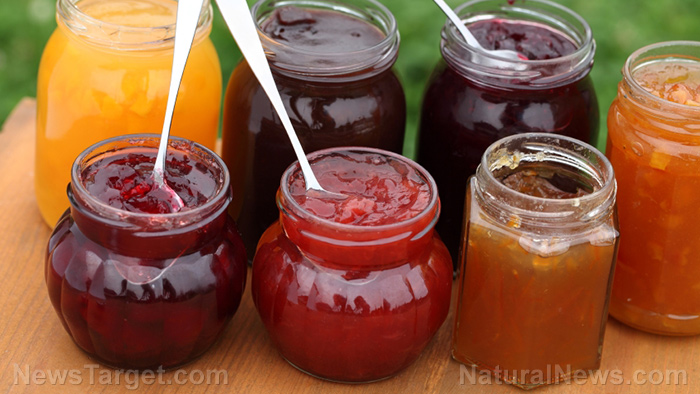
Sulfites – toxicity, side effects, diseases and environmental impacts
Tuesday, November 14, 2017 by Zoey Sky
http://www.naturalpedia.com/sulfites-toxicity-side-effects-diseases-and-environmental-impacts.html

Sulfites, also known as sulfite, sulfite ion, sulphite, sulfite ions, trioxosulfate(2-), or sulfonates, are chemicals used as preservatives. Sulfites help prevent browning and discoloration in foods and beverages when they are being stored, prepared, or distributed. Sulfites have also been used in wine-making for centuries.
Found in certain foods and beverages, sulfites are also present in various medications. In the 1970s and the 1980s, sulfites were mainly used as preservatives in foods and beverages. However, due to various cases of severe reactions to sulfites, the U.S. Food and Drug Administration (FDA) banned the use of the compound in fresh fruits and vegetables.

List of known side effects
Asthma is the most common negative side effect of sulfites. Other common adverse reactions to the compound include chest tightness, coughing, and wheezing, and these affect at least five to 10 percent of individuals with asthma. The symptoms have a higher chance of occurring when asthma is poorly controlled. Negative reactions to sulfites can also occur even though an individual has no preceding history of asthma. Reactions to sulfites can range from mild to potentially life-threatening.
Severe allergic reactions (anaphylaxis) are uncommon. While anaphylaxis has been described, it is very rare. Symptoms include flushing, fast heartbeat, wheezing, hives, dizziness, stomach upset, and diarrhea. Individuals may collapse and experience tingling or have difficulty swallowing.
Body systems affected by sulfites
Sulfite sensitivity occurs often in asthmatic adults, primarily in women. However, it is also uncommonly reported in preschool children. Sulfite sensitivity reactions may vary from no reaction to severe, but the majority of reactions are mild.
These manifestations can include dermatologic, respiratory, or gastrointestinal signs and symptoms. The details of the sensitivity responses have yet to be determined.
The inhalation of sulfur dioxide (SO2) “generated in the stomach after ingestion of sulfite-containing foods or beverages, a deficiency in a mitochondrial enzyme, and an IgE-mediated immune response” could be related to sulfite sensitivity.
Items that can contain sulfites
The FDA has provided the following guide to various foods and drugs that may contain sulfites. Do take note that not all manufacturers use sulfites in these products and that the amounts they contain may vary. Sulfite content in these products can be verified by checking product labels.
- Alcoholic beverages – Beer, cocktail mixes, wine, wine coolers
- Baked goods – Cookies, crackers, pie crust, pizza crust, quiche crust, flour tortillas
- Beverage bases – Dried citrus fruit beverage mixes
- Condiments and relishes – Horseradish, onion and pickle relishes, olives, salad dressings, wine vinegar
- Confections and frostings – Brown, raw, powdered or white sugar derived from sugar beets
- Modified dairy products – Specially prepared skim milk (filled milk) where vegetable oils are added in place of animal fats for more fat content
- Drugs – Antiemetics (prevents nausea), cardiovascular drugs, antibiotics, tranquilizers, intravenous muscle relaxants, analgesics (painkillers), anesthetics, steroids and nebulized bronchodilator solutions (used for treatment of asthma)
- Fish and shellfish – Canned clams; fresh, frozen, canned or dried shrimp; frozen lobster; scallops; dried cod
- Fresh fruit and vegetables (banned) – Sulfite use on fresh produce is banned, except for fresh potatoes
- Gelatins, puddings, and fillings – Fruit fillings, flavored and unflavored gelatin, pectin jelling agents
- Grain products and pastas – Cornstarch, modified food starch, spinach pasta, gravies, hominy, breadings, batters, noodle and rice mixes
- Jams and Jellies
- Nuts and nut products – Shredded coconut
- Plant protein products – Canned, bottled or frozen fruit juices; dried fruit; canned, bottled or frozen dietetic fruit or fruit juices; maraschino cherries and glazed fruit
- Processed vegetables – Vegetable juice, canned vegetables, pickled vegetables, dried vegetables, instant mashed potatoes, frozen potatoes and potato salad
- Snack foods – Dried fruit snacks, trail mixes, filled crackers
- Soups and soup mixes – Canned seafood soups, dried soup mixes
- Sweet sauces, toppings – Corn syrup, maple syrup, fruit toppings, high-fructose corn syrup, pancake syrup
- Tea – Instant tea, liquid tea concentrates
How to avoid sulfites
Since SO2 is still widely used in wine-making, you can avoid sulfites by limiting your wine intake or abstaining from it completely. You can also try some “natural” wines on the market that contain little to no SO2. Natural red wines are better options because red wine often contains less tannin than white wines. Tannins are a stabilizing agent, and since most red wines undergo malolactic fermentation, they require less S02 to protect the wine as it matures.
Where to learn more
- 3 Reasons To Choose Organic Wine
- Cancer causing chemicals found in cola coloring ingredient
- 5 Ingredients that Should Never Have Been Approved by the FDA
- Global Warmings Great Foe: Bacon
- MSG: Where you least expect it.
Summary
Sulfites are chemicals used in preservatives, and they are often used in most foods and beverages to prevent browning. Sulfite sensitivity occurs mostly in asthmatic adults, and comes with symptoms that range from mild to severe. Sulfites are key ingredients in preventing oxidation in wines, keeping them fresh.
Sources include:
Tagged Under: Tags: sulfites





